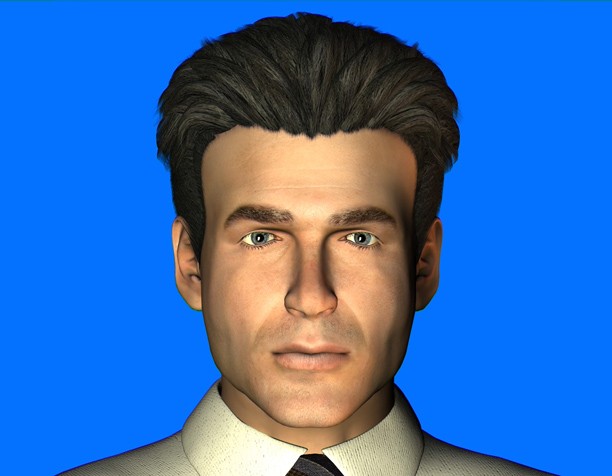The year is 2020. As a person passes through airport security, he or she is handed a familiar device: an iPad. Instantly, an avatar TSA agent comes to life on the screen and begins asking questions of increasing severity. A few minutes later, the person is through security faster than ever before.
Graduate researchers in the Eller College of Management’s department of management information systems are working to make the above scenario a reality, taking their Department of Homeland Security-funded AVATAR kiosk to the next level — tablet style.
The AVATAR, which stands for Automated Virtual Agent for Truth Assessments in Real-Time, is a product of BORDERS, the National Center for Border Security and Immigration. The BORDERS consortium is a funded project of the Department of Homeland Security designed to produce new, more efficient technology to aid in its monitoring of international immigration and trade.
According to research published by Michigan State University, humans are only 54 percent accurate at spotting deceit, hence the existence of projects like AVATAR, encouraging technological innovations in deception detection.
The AVATAR virtual interrogator serves as a middleman between law enforcement personnel and subjects in question, using sensors to detect minute variations in human voice as well as facial expressions. The obtained information is then run through algorithms and processing software, detecting red flags and notifying instructed personnel to take a closer look.
The third-generation kiosk underwent live testing at the DeConcini Port checkpoint near the U.S.-Mexico border. Commuters interested in the U.S. Customs and Border Protection’s faster security processing program, the “Trusted Traveler” initiative, were the first real-time testees for this updated version of the AVATAR.
Since law enforcement agents often make security assessments in only a few seconds, this AVATAR kiosk can make the process more efficient, identifying up to 90 percent of all deception encountered in a controlled environment.
The tablet integration project is underway now, according to Mark Grimes, an MIS graduate student conducting research in the AVATAR lab. It would be used on the battlefield, on a Navy vessel or other such locations. However, scientifically, it is uncertain whether this is possible or will yield any results, Grimes said.
Currently, the machine focuses on changes in vocal pitch, speed and volume. It makes a baseline of a person’s voice when answering a normal question and takes note of his or her transfer to more sensitive questions, Grimes said.
“The final decision,” Grimes said, “always rests with the officer.”
The research team is also working on integrating sensors for eye gaze and body movement. The release date of these kiosks is to be determined, specifically by future policy measures with regards to this technology.
“AVATARs offer consistency for the initial screening and more efficiency in higher volume applications,” said William Neumann, a senior MIS lecturer. “Businesses could potentially use them to screen new employees in the initial hiring process, although this would require careful design to be in compliance with legal hiring practices.”
Neumann said that virtual-based interviews have proven to sometimes be more effective and that the use of AVATARs in certain instances offer a force multiplier solution.
“In situations like the recent flu outbreak,” Neumann said, “an
AVATAR could be used to provide an initial assessment, perhaps even while the patient was at home, to help make emergency and urgent care centers more effective.”
The technology reinforces the value that the UA, as a research institution, contributes to the nation, Neumann added.
“It also creates new opportunities to expand the research work from which the next generation of breakthrough technologies will emerge.”









